Lock Blog
A resource for consumers, locksmiths, and security professionals
A resource for consumers, locksmiths, and security professionals
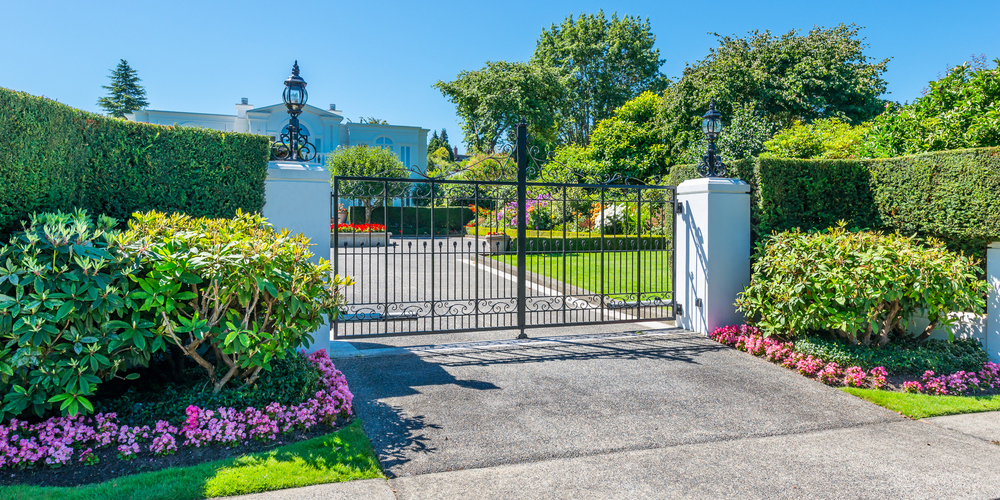
In the modern age, there are many things to consider about creating adequate perimeter security systems. The innovations in security technology have allowed building owners access to many avenues of protection. All of this can get rather overwhelming, but it is important that you learn to navigate the finer points of perimeter security.
The perimeter of a building is the area around a structure or property. Sometimes the term perimeter security is used to describe all the security that prevents entry into a building itself. Most commonly, perimeter security means boundaries besides the exterior of a structure, such as walls and other fortifications.
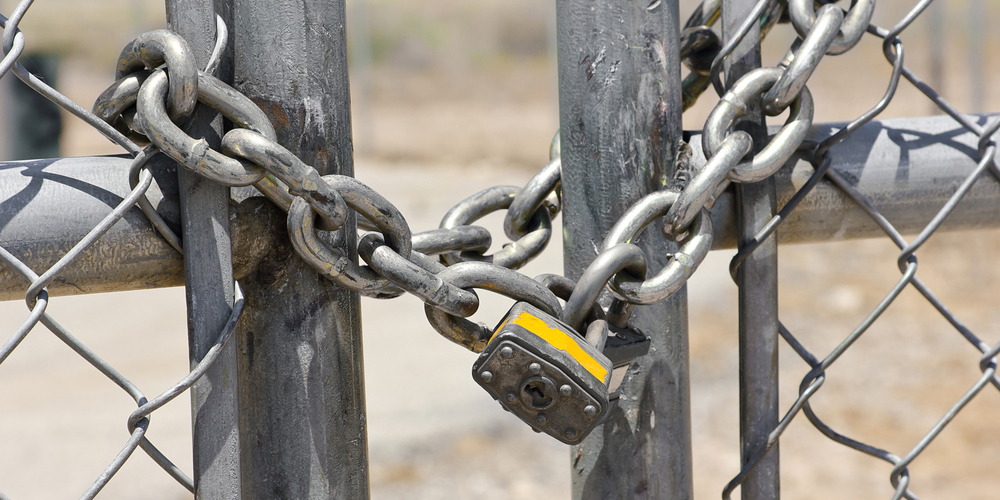
One of the most important considerations, in terms of perimeter security, are the locks you are using. We will get a little more into this in the gate section, but right now I want to talk about what to look for in a lock in general. The biggest concern for the locks you will be using with your perimeter security is often destructive entry. The most likely breach that a property is likely to experience will be forced entry, which simply destroys the lock to allow a criminal to pass the perimeter security systems. The solution to this threat is hardened metal alloys that are as thick as possible. You want the strongest materials and as much of those materials as possible.
In the case of perimeter security, what you are hoping to prevent by investing in locks that make use of hardened metal alloys are mainly cutting attacks. The Sargent & Greenleaf 951C is a good example of a lock that helps prevent cutting attacks. The widespread and historic use of padlocks on gates is part of the reason why they are a concern. Cutting the shackles of these locks is often the most effective method of entry. You must also consider the hasp or chain being secured by the padlock, as these may also be targeted by cutting attacks. If they are weaker than the lock, the strength of the lock will be inconsequential.
In terms of covert entry, many people worry that their perimeter security systems will be overcome by some form of lock picking. Every lock can be picked, but that is not usually the best place to spend time and resources on prevention. It is extremely unlikely that anyone will attempt to undermine your perimeter security via lock picking. It is exceedingly more common that bump keys will be used. For that reason, you should look into ways to protect against bump keys. These methods will also help to prevent lock picking, but again, that is a less pressing concern. Internal complexity for locks will help your perimeter security in general and help to stop unauthorized key duplication (but we will talk more about that in the access control section).
Unlike a fence, a wall has a certain innate restrictive relationship between visibility and height. The higher the walls, the less visible the interior will be from outside the perimeter, and the less visible the outside of the perimeter will be from the interior. Height allows for privacy and creates a greater obstacle to illegal entry, but a limitation on visibility means greater cover for anyone approaching the property. Both visibility and height have something to offer to perimeter security, but you must determine which works better to achieve your goals.
One of the largest goals you are looking to achieve with perimeter security, and security in general, is to come in “at” or “under” budget. With a high wall, visibility concerns can be tackled with security cameras or other forms of documentation, such as security guards. Documentation is a key consideration regardless, but it is also one of the most costly, complicated, and time-consuming. In the case residential perimeter security, these additional steps may not be feasible.
It all comes down to the intention of your perimeter security. Ideally, a wall is offering you a sturdier barrier than a gate, which will force people to go over it if they mean to enter illegally. This type of controlled vulnerability allows for more fine-tuned perimeter security planning. You are experiencing greater privacy as a result of the solid boundary and concentrating the focus of forced entry onto the gate.
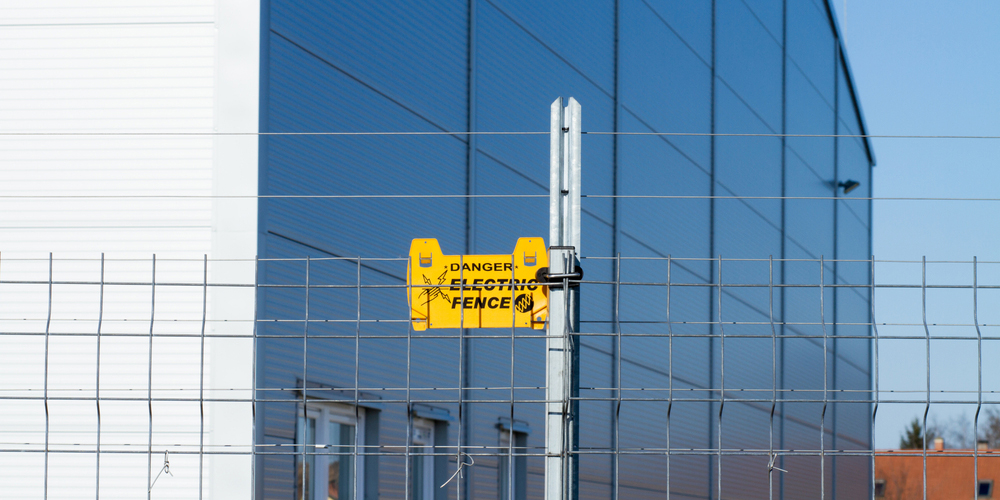
There is an extreme flexibility in having the forefront of your perimeter security be a fence. The price, look, and functionality of a fence have an almost unparalleled range. The perforations and openings between slats, links, planks, etc., can offer extreme visibility or a wall-like appearance. You can grow ivy, or other plants, to change the level of visibility of pre-existing fence without having to undergo full replacement. In extreme cases where you need to increase perimeter security, the most common fences are easier to electrify (but this will vary on the material of the fence).
It is likely that a fence will be weaker than a wall, but if you are not concerned with automotive ramming threats, this may not be a factor you care about. This type of protection will vary, but often a fence can be compromised at certain points (either by vandalism or wear), and create unintended entryways that defeat all of the existing perimeter security measures. Even if these openings are not wide enough for a human being, your perimeter security could be vulnerable to animal infestation, or pet escape.
A fence is similar to a wall, but it uses a post based system that commonly has material lined along the posts to shape the appearance of the fence. Wood fences and chain link are the most common fence types. Often a fence is intended to denote that people should go not father, or are simply intended to denote a property line. They provide little security on their own, but with electrification or barbed wire, they become somewhat formidable. A fence alone is very rarely high-security.
I have written an entire piece about gate security, but there are certain factors that should be highlighted more precisely in terms of the role gates play in perimeter security. Your gate is the chance to make a moving boundary in you perimeter security. Simply put, a gate is a moving section on a gate or wall that allows entry past a building’s perimeter security systems. Without a gate, there would be no exit or entry past the perimeter of a building.
The gate will need a locking mechanism. In the locks section, we have already talked about the considerations for the locks themselves, but it is still good to know when each type of lock can be used. If you are planning on taking vehicles past the perimeter security, it may be ideal to use a motorized track and electronic lock. For gates that will not have heavy traffic, or only have foot traffic, choosing a high-security padlock may be what you need. There may also be a gate setup that allows you to use a deadbolt and/or keyed handle/knob.
Building effective perimeter security systems means focusing on security and not convenience, so a keyed handle/knob is not ideal to secure a gate. A deadbolt provides more security based on the way the locking mechanism prevents simple bypass techniques. However, you need to consider the strength of the deadbolt you are using. All of these lock based gate considerations will give you more insight on what you need for the gate, in terms of height and defense. If your lock is too strong, the gate itself will be the most likely target for forced entry, even if that forced entry is simple climbing over the gate.
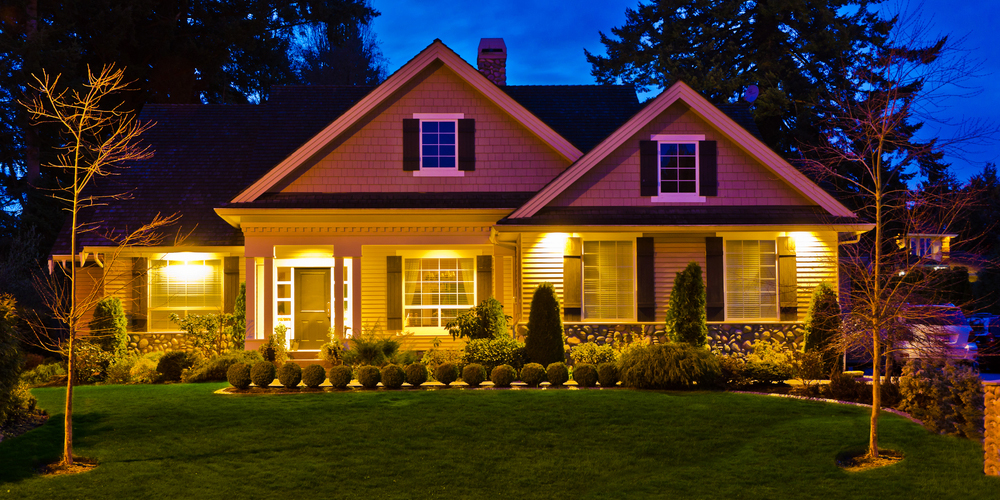
An often overlooked aspect of perimeter security is the type of lighting being used. If you have not considered what your perimeter security system is offering the property in terms of lighting, the first aspect to assess is shadows. When the perimeter has trees, pillars, and other tall obstructions, even the strongest lights can leave exceedingly dark shadows. Lighting provides the opportunity to see an intruder approaching or attempting to overcome your perimeter security.
If you do not have someone constantly monitoring the perimeter, motion sensor lights are effective in focusing attention. This is the choice of many residential buildings without any security patrols. When residents need to notice and deal with threats, a light suddenly turning on does a good job of gathering some attention. If this light is in front of a perimeter wall, or obstructing fence, inhabitants within the business may not be able to see the light. In cases like this, you will be looking to gather the attention of neighbors or pedestrians.
The further removed a person from caring about you is, who sees something suspicious illuminated by the lighting of your perimeter security system, the less likely they are to intervene. Everyone has some interest in preventing a crime from occurring, but when a neighbor does not know about the threats, inhabitants, and goals of your perimeter security, people make excuses for doing nothing. By and large, people are looking to avoid confrontation. If they do not know you, or even like you, help with these perimeter alerts is doubtful.
You have to be informed about breaches or attempted breaches to your perimeter security system. A common question is, “Should I get a dog or an alarm system?” You can get both, but the answer to that question is going to ultimately come down more to your ability to take care of an animal than it will the security offered by either. In terms of alarms for your perimeter security system, the best option is something that offers monitored security. Services with monitoring capabilities allow the authorities to be notified in times of emergency.
Contacting a private security company or the local police automatically are effective only if their response times are within the average time it takes to commit a break-in. They must also be prepared to face a confrontation with the criminal(s). If you are planning to respond to personal alerts given by your perimeter security system, you must be able to meet these standards. Without this type of response, notifications are rather unnecessary. An alarm that is loud may be preferred to alert anyone who is around to the illegality taking place.
In terms of a perimeter security system that has notification capabilities, you can choose to go with something more discrete such as a smart lock. There are several features that you should look for when choosing a smart lock, but one that can offer greater perimeter security is access notification. This allows owners to know when a lock has been opened. This data log is perfect if you are concerned with internal threats.
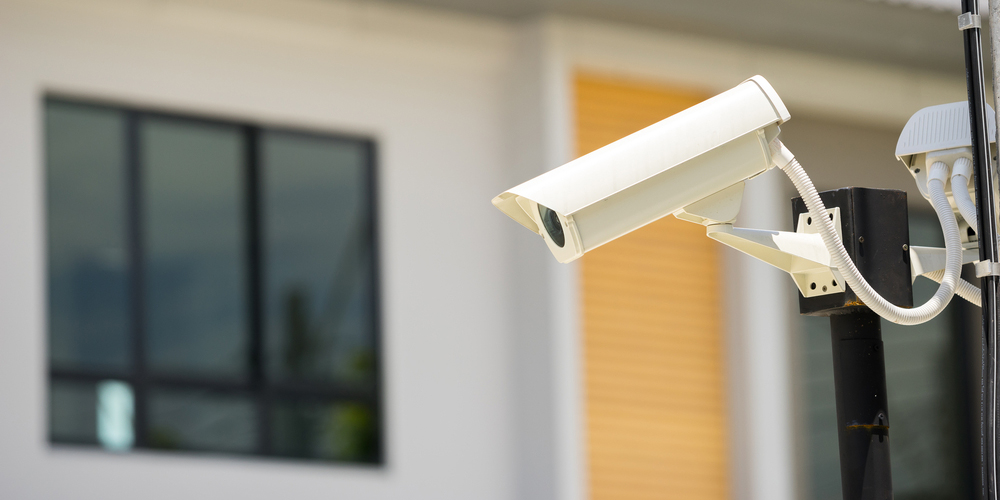
In this current age, the most likely perimeter security systems are going to rely on security cameras. This is largely due to the increased access to these products, which simple DIY surveillance cameras have created. These products have a level of quality that makes them very effective in capturing footage of threats to your perimeter security. But for how popular this proposed solution is, it is not enough to simply have recordings of your property. For instance, installing a Nest Cam outdoor security camera does not necessarily mean burglars will be deterred from committing any crime.
Knowing the basics of what you can film with a camera will provide a good foundation. You need to stay on the right side of the law with all of your documentation efforts, or you will risk losing any type of effectiveness for this type of perimeter security system. It is also important to know the intentions of your documentation efforts. If you are hoping to use this information to prosecute or find criminals or trespassers, this can be exceedingly difficult. Using footage to achieve a conviction or even an arrest, has many issues.
Besides your evidence being on trial and the difficulty of solving property crimes, setting yourself up for clear usable footage is no easy task. You need to get the right type of camera that has the capability to record in the environment it is in. Issues with glare during the day and visibility during the night (or the transition of perimeter lights turning on), are very common in making footage unusable. And in terms of placement, you must have a location in mind that is most likely to be targeted, or you will need a lot of cameras.
There are many natural elements that can affect your perimeter security system positively and negatively. A positive natural barrier is something that offers an another level of perimeter security to the property. In the days of castles, this would be things like having an ocean or cliff face behind a structure, severely limit options for an approach. In the current age, these natural protections can be things like proximity to a police station or a single long road that leads to your home. Anything additional your location offers your perimeter security creates a positive natural barrier to criminals.
There are also natural barriers to your security, that prevent you from being able to take full advantage of your possible perimeter security system. There may be a treeline on a side of your property that allows criminals to cover their approach with no real way of detection if the area in question is too large. Heavy foot traffic may make light sensors and motion based cameras alert you to so many false alarms that this becomes a hassle without offering any security.
You need to know what is working for you and what is working against you. Capitalize on the positive barriers and try to compensate for what you cannot change in terms of negative barriers. Do not use a method of perimeter security just to use it. Unhelpful investments that are undercut by natural barriers often lead to perimeter security system fatigue. When you use something without considering if it is the right choice for your property, it can make you feel like nothing you do is good enough. Do not discourage yourself from taking the necessary steps in perimeter security.
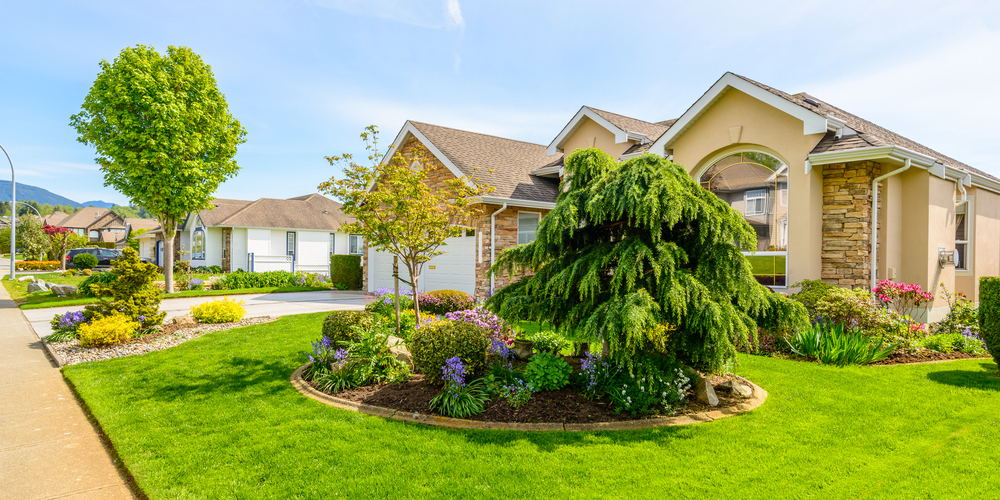
As great as it would be for aesthetics not to matter with your perimeter security system, it is likely not the case. What is practical is rarely pretty. Visually pleasing practical security often comes at a much higher cost. The consideration for aesthetics is to find a balance. Leaning towards something that is pleasing on the eye, and considering perimeter security as an afterthought, is dangerous. A good test you can give yourself is answering the question, “Am I doing this so the property will look good, and then looking for a way to incorporate security? Or am I trying to make the security I need look good?”
The ideal answers are “No” to the former and “Yes” to the latter. There are of course exceptions, and never doing something because it looks good, for the sake of aesthetics, is near impossible. But when something is being done for appearances it is important to look at how it affects your perimeter security. You would never want to wear clothing that raised the chances of being set on fire just because they looked good. So why would you risk the safety of your property simply for appearances? If you do something just to look good, make sure it is neutral and not a detriment to your perimeter security systems.
Who has been given access to the property is a very important part of making your perimeter security systems work to your benefit. Key control is a good starting point. In the case of perimeter security systems, keys could be numeric codes, RFID remotes, physical keys, etc. If you are using codes or even biometric locks, your access control management software may make it quite simple to know who is entering the property and when. If there are any issues, it may also be rather simple to revoke the privileges of troublesome individuals.
The first thing you need to consider for who you chose to give access to is trust. Not just trust that they will not take advantage of your property, but also trust that they will be smart, and take the right precautions to protect their key from being stolen or misused. Every person with access to a property has the potential to undermine any of the perimeter security systems. And the property owner is not immune to creating that potential harm.
Key control for physical keys can be taken care of by investing in locks with patented keyways. This will improve your protection against most forms of covert entry, but mostly it will prevent unauthorized key duplication. Patented keys cannot be made at your local hardware store’s lock isle. The key blanks and key cutting machines that can make these keys are disrupted to only certain vendors. And those vendors need to go through the lock manufacturer to make a key. This is much better than keys with “DO NOT DUPLICATE” markings, which do not reliably prevent unauthorized key duplication.
Now that you know some of the things you must consider with your perimeter security systems, you can make your building a formidable fortress against break-ins and unlawful entry. Stand up to the threats facing your building by taking the steps towards better perimeter security. Once you are protected, you can rest easy knowing that the things that could harm you, your possessions, and the people in your life are being held at bay. If you need help creating your own security plan, or implementing any security measures, never hesitate to reach out to a locksmith or security professional.
Category: Commercial, How To's, Residential, Safety & Security